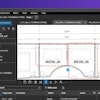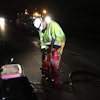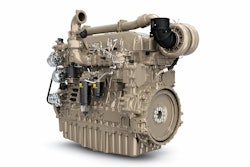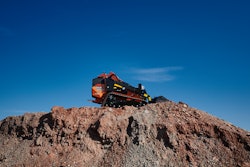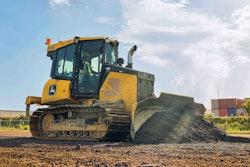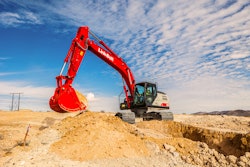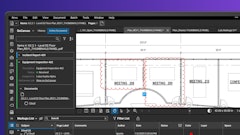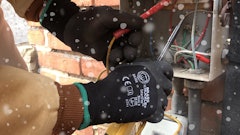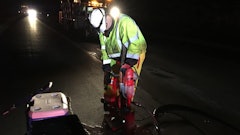
The Equipment Today team talked with industry leaders about challenges faced in 2023 and what the industry can look forward to in 2024 for the State of the Industry Report. Jon Gilbeck, manager, customer success and technology sales, with John Deere, shared his expertise in this Q&A.
What was the construction industry’s biggest challenge in 2023?
The construction industry’s biggest challenge in 2023 has been labor. It’s common to hear contractors turn away potential work [because of] a lack of available labor. Construction companies, dealers and industry associations have been actively recruiting to increase awareness of the opportunities in the construction industry.
Are changes in the workforce, including retirements, affecting your company?
Higher mortgage rates impede employees’ willingness to relocate, and the desire for remote work have created difficulties in staffing some field-based positions.
John Deere opened new office locations in Chicago and Austin to appeal to a broader talent pool.
Is your company still experiencing fallout from the pandemic, including supply chain issues or other problems?
Labor challenges not only impact our customers, but they also impact staffing for suppliers and John Deere operations. We have a dedicated supply management team working very closely with our suppliers to minimize delivery delays and ensure quality and a talented operations team producing significant product volumes to meet our customers’ demand for new products.
In what technological areas do you see the potential for the most innovation in 2024?
Industry is at an inflection point with technology. AI and machine learning enable us to solve manufacturing problems faster than ever and maintain quality standards. Raspberry Pi cameras, digital work instructions linked to the manufacturing execution system and Bluetooth-equipped tooling are a few examples of how this technology is integrated inside the factory.
John Deere has started offering advanced vision systems with 360-degree views around the machine. Additionally, our SmartDetect system uses stereo camera technology, machine learning and artificial intelligence to specifically identify people and other objects on jobsites.
What innovations or improvements do you anticipate in construction equipment in 2024?
Customers are looking for solutions that improve productivity; jobsite safety; profitability; and, in some segments, sustainability. John Deere has released new machine safety systems to aid operators and higher productivity models like the 85 P-Tier excavator and is investing in battery-electric and diesel-electric models to support customers’ profitability and sustainability goals.
Which construction sectors face the most hurdles in the move toward electrification? Alternative fuels? Automation?
Diesel-electric machines from John Deere are popular options due to a short return on investment, performance improvements and familiarity with diesel models. Deere will be launching multiple wheel loaders and crawler dozers (see models below).
John Deere has identified three categories of customer operations to support the adoption of battery-electric vehicles. First, customers working in a fixed area, like a small farm or landscaping yard. This is an ideal application for electric machines as the utilization is generally lower and there is onsite access to charging. The second is where the customer requires daily transport of machines back to the yard at the end of the day, which is another ideal customer. The third is non-daily transport, where regular access to fixed charging infrastructure is limited. There will be fuel management solutions available, but with the added expense and time, it will change how people work. This large section of the market will have slower adoption.
How are the IoT, software and connectivity affecting your company specifically and the industry as a whole?
Connectivity has been significantly impacting us and the construction industry in various ways, driving innovation, efficiency and safety. The Internet of Things (IoT) enables opportunities to increase performance, work safer and improve decision-making.
The John Deere Operation Center enables data to be leveraged near real-time. Contractors and dealers alike can stay connected with predictive maintenance and proactive monitoring, and equipment downtime can be minimized. This reduces costs and increases overall jobsite efficiency.
Connectivity is helping us and our customers to work more efficiently, reduce costs and deliver results with greater accuracy and speed.
Do you expect the IIJA to affect your business or your customers’ businesses? How, if you can explain further?
The Infrastructure Investment and Jobs Act (IIJA) is funding a steadily increasing flow of work that will last for several more years, providing more certainty to both our customer’s equipment purchasing decisions and our production planning.
What will be the biggest challenge in 2024 for the industry?
2023 has been a very strong year for our customers, and the backlog of work for 2024 appears solid across the U.S. and Canada. Elevated recession risk and high interest rates have increased the caution of our customers and led to some project delays in the commercial and residential sectors.
Are there any other insights looking toward 2024 that you’d like to share?
Historic legislation passed by the U.S. Congress on infrastructure, new U.S.-based semiconductor production and private investments in battery-electric vehicles and battery plants are offsetting demand for construction equipment in new home developments in 2024 and beyond.
John Deere will be launching a multitude of new products and technologies to address key challenges of the labor shortage and the need for jobsite efficiency. Many of these new products, including the 744 and 824 X-Tier wheel loaders, the 85 P-Tier excavator, the 335 P-Tier compact track loader and the John Deere Operations Center were on display at CONEXPO-CON/AGG 2023 and will be arriving at John Deere dealers throughout the year.

